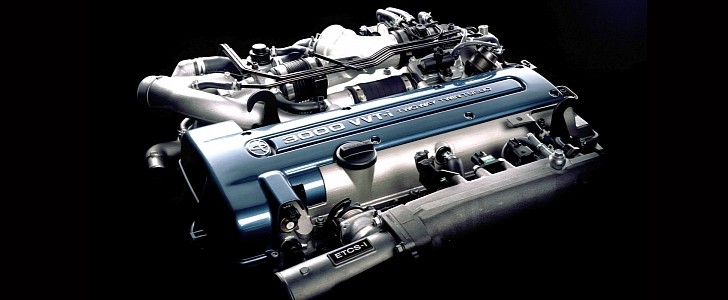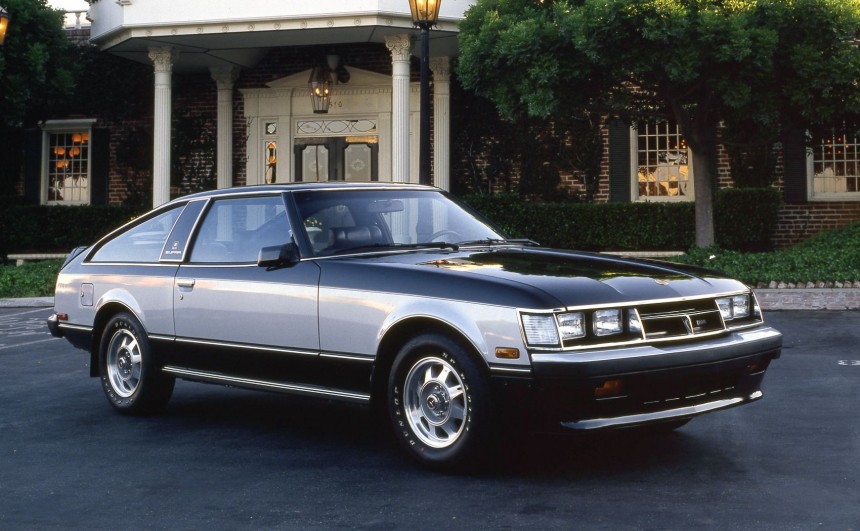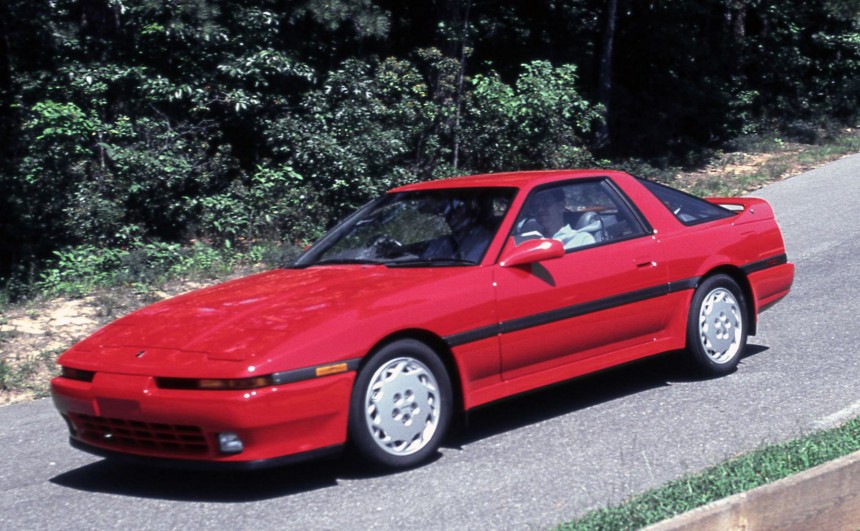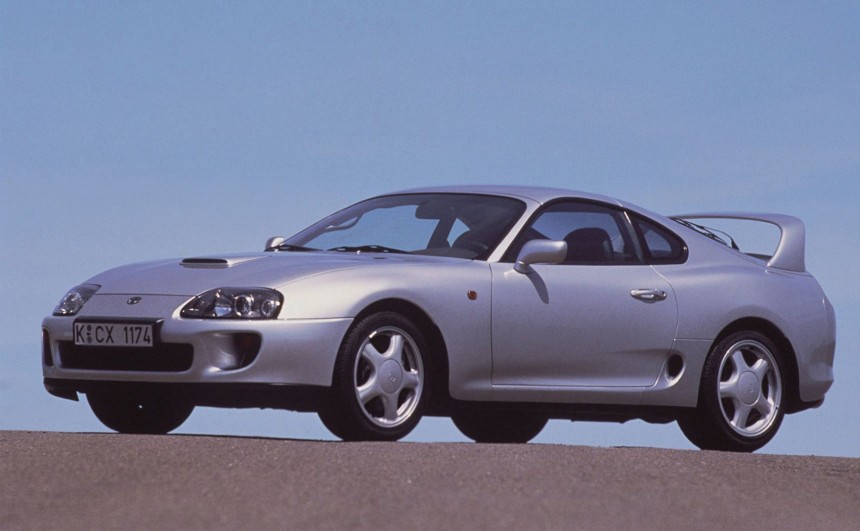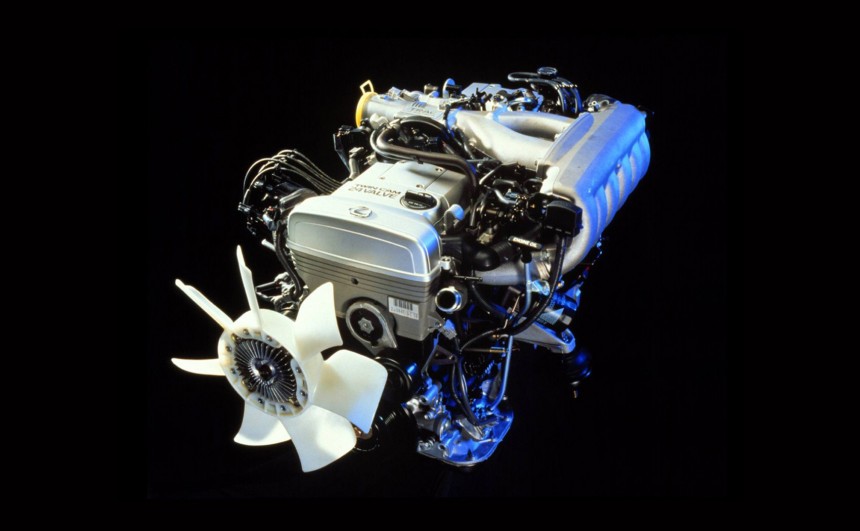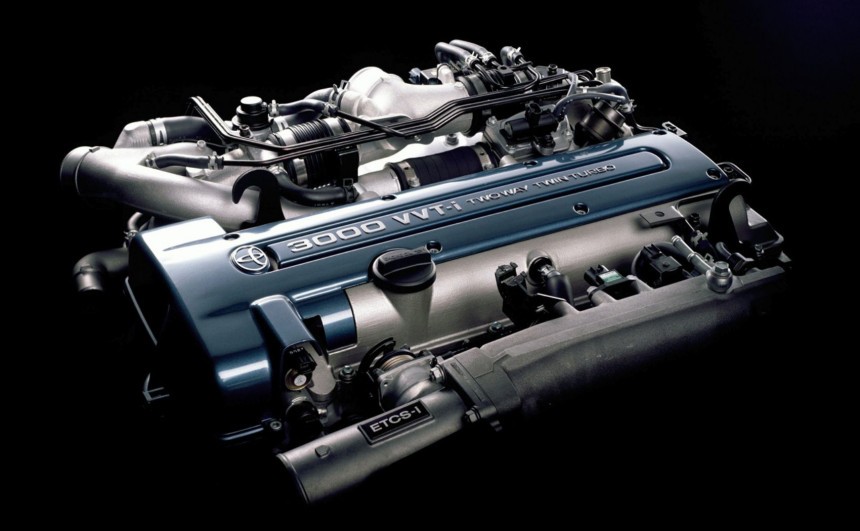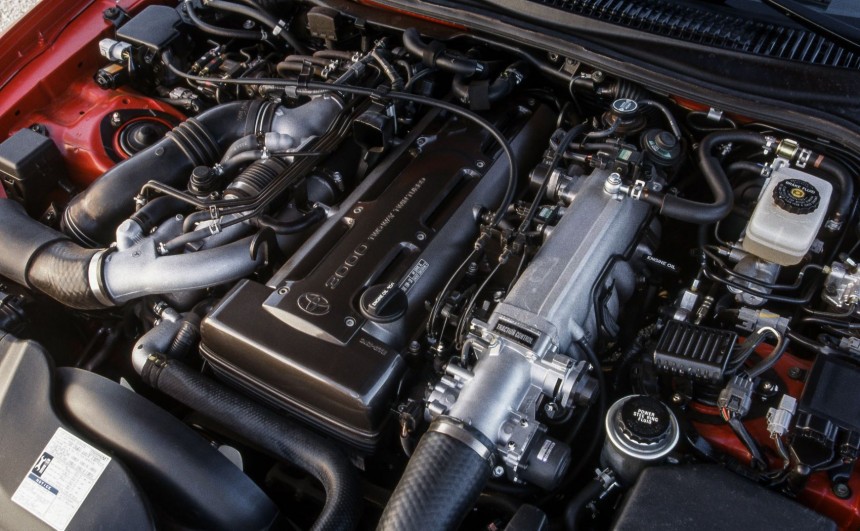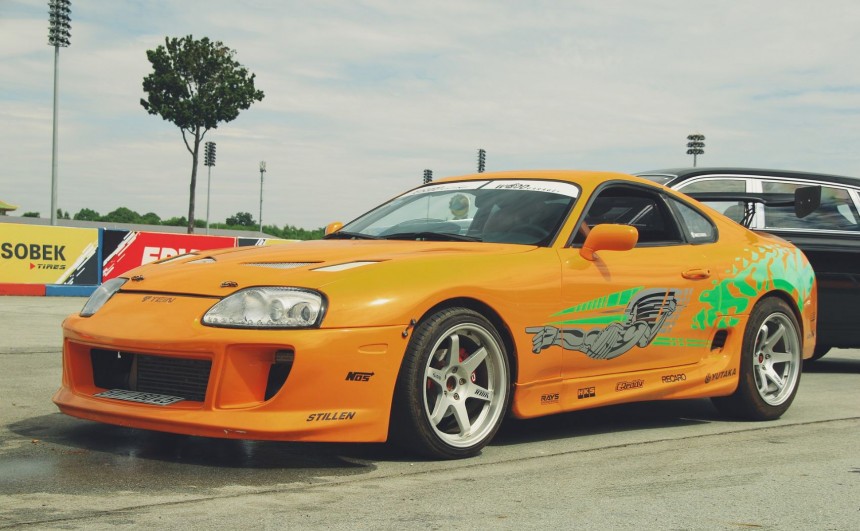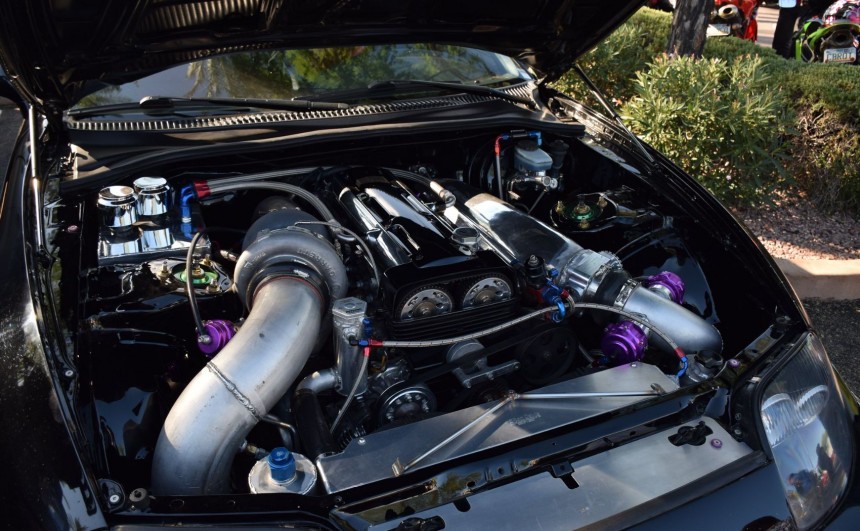The Japanese manufacturer is well known for making some great engines throughout the years, but the one that stands out from the pack is the legendary 2JZ. One of the best six-cylinder powerplants ever made, the 2JZ is so well put together that, with a few modifications, it can deliver obscene amounts of power.
To understand how this engine came into being and how it became so popular, we have to take a look at the history of the Toyota Supra. It all started back in the ‘70s when the Japanese automaker was itching to build a car that would rival Nissan’s successful Z.
It took the existing Celica, stretched it out a little bit, placed an inline-six from the M family under its hood, and called it Celica Supra or Celica XX in Japan.
Although the car that debuted in 1978 was relatively successful, it didn’t manage to go anywhere near the Z in terms of sales. However, it laid the foundation for the Supra six-cylinder lineage.
Only three years later, the whole Celica lineup got a complete makeover. The exterior was heavily redesigned, and the sporty Celica Supra got a turbocharged version of the M six-cylinder starting in 1982.
Fast forward to 1986, and the newly released third-generation Supra finally becomes a separate model, breaking away from the Celica lineup.
The sports car now used a larger platform borrowed from the second-gen Soarer, giving engineers more room to develop a high-performance model.
Under the hood, among the various engine options, the Supra was available with the last and arguably greatest iterations of the M family, the 7M-GE, and the turbocharged 7M-GTE, which grew in displacement to 3.0 liters (183 cu in).
In 1989, Japanese market models would be given a brand-new engine to replace the aging M family. Its codename was 1JZ, the forefather of the legendary powerplant. That same year, the development of the fourth-generation model began.
After four years of tumultuous development work, the legendary A80 Supra officially began production in 1993. Compared to its predecessors, the new model was an engineering marvel as Toyota pulled out all the stops to create the ultimate performance car.
The car featured two new engines: the naturally aspirated 2JZ-GE with a power output of 220 hp (164 kW) and 210 lb-ft (285 Nm) of torque, and the twin-turbocharged version codenamed 2JZ-GTE, which was capable of spitting out 276 hp (206 kW) and 318 lb-ft (431 Nm) of torque on the Japanese model.
European and North American twin-turbo engines were fitted with smaller, steel-wheeled turbochargers and bigger fuel injectors which increased power output to 321 hp (U.S.) and 326 hp (Europe).
Although the 2JZ was destined for the Supra, it was first released on the 1991 Toyota Aristo, which was only marketed in Japan.
The engine is built on a cast iron, closed deck block that is extremely durable due to its many reinforcements. To this day, it’s one of the most heavily reinforced blocks ever produced, and that is one of the main reasons for its virtually limitless power potential.
If this wasn’t enough, Toyota engineers designed a beefy girdle that they fitted between the block and the oil pan, further reinforcing the block.
The internals are also extremely strong. For example, the fully counterweighted forged steel crankshaft features thick, reinforced main bearing (62 mm) and connecting rod (52 mm) journals. The same can be said about the con rods, which are also forged although naturally aspired VVT-I versions of the engine featured slightly weaker rods.
Some people will also tell you that the 2JZ’s pistons are also forged, but they actually aren’t. However, the high-pressure cast hypereutectic pistons made by Toyota for these engines were so well built and tested that they proved to be extremely durable. Some tuners reported getting above 800 hp out of a 2JZ fitted with these stock pistons.
The dual overhead cam aluminum cylinder head uses four valves per cylinder for a total of 24. Compared to the block, the head didn’t feature a groundbreaking design; instead, Toyota opted for a simple yet reliable layout: no hydraulic valve lifters, no rocker arms, just some buckets and shims for valve actuation.
In terms of forced induction, the 2JZ-GTE comes with sequential twin turbos. One of them kicks in at low RPMs, and the other joins at higher RPMs, in this case, at 4,000.
Usually, this type of system uses a combination of a smaller and a bigger turbo, yet the 2JZ-GTE comes with identical ones, resulting in amazingly smooth and linear power and torque delivery.
No less than 300 lb-ft (407 Nm) of torque were available from 1,800 RPM, which is amazing for an engine developed in the early nineties.
Because of the gentlemen’s agreement between automakers in Japan that limited power output to 280 hp to reduce the high number of road accidents occurring in the country at the time, the 2JZ came grossly detuned from the factory.
That brings us to the main reason why the engine became so popular during the 2000s. Partially due to the initial Fast and Furious movie and videogames like Need for Speed: Underground, gearheads started to tune their 2JZ-powered Supras to gain more power.
In doing so, they discovered that doubling or even tripling the output of this marvelous engine was surprisingly easy.
The recipe is pretty simple and straightforward: just swap the small twin turbos with a larger one or add one to the naturally aspired version, then add a set of aftermarket fuel injectors and a high-flow fuel pump, a larger intercooler, and an aftermarket ECU. The result? Well above 700 hp.
If you want to make the process easier and get even more power, swap the stock cams with stronger aftermarket ones, and get stiffer valve springs.
With advanced modifications that involve an even bigger turbo and swapping out internals such as the stock pistons and conrods with forged ones, you can go well above 1,500 hp with a 2JZ.
These mind-blowing figures prove that this engine is a miracle of engineering, and by now, you probably understood why it’s so popular and why it’s considered the best engine Toyota has ever built.
Also, it’s now clearer why true gearheads were disappointed to see a BMW-sourced engine on the fifth iteration of the Supra and not a modern version of this amazing powerplant.
Because of this immense popularity, prices for a used 2JZ engine or a fourth-gen Supra have skyrocketed over the last two decades. If you’re lucky enough to find one of these cars in mint condition, without any modifications, prepare to splash the cash as they go for several hundred thousand.
It took the existing Celica, stretched it out a little bit, placed an inline-six from the M family under its hood, and called it Celica Supra or Celica XX in Japan.
Only three years later, the whole Celica lineup got a complete makeover. The exterior was heavily redesigned, and the sporty Celica Supra got a turbocharged version of the M six-cylinder starting in 1982.
Fast forward to 1986, and the newly released third-generation Supra finally becomes a separate model, breaking away from the Celica lineup.
Under the hood, among the various engine options, the Supra was available with the last and arguably greatest iterations of the M family, the 7M-GE, and the turbocharged 7M-GTE, which grew in displacement to 3.0 liters (183 cu in).
In 1989, Japanese market models would be given a brand-new engine to replace the aging M family. Its codename was 1JZ, the forefather of the legendary powerplant. That same year, the development of the fourth-generation model began.
After four years of tumultuous development work, the legendary A80 Supra officially began production in 1993. Compared to its predecessors, the new model was an engineering marvel as Toyota pulled out all the stops to create the ultimate performance car.
European and North American twin-turbo engines were fitted with smaller, steel-wheeled turbochargers and bigger fuel injectors which increased power output to 321 hp (U.S.) and 326 hp (Europe).
Although the 2JZ was destined for the Supra, it was first released on the 1991 Toyota Aristo, which was only marketed in Japan.
If this wasn’t enough, Toyota engineers designed a beefy girdle that they fitted between the block and the oil pan, further reinforcing the block.
The internals are also extremely strong. For example, the fully counterweighted forged steel crankshaft features thick, reinforced main bearing (62 mm) and connecting rod (52 mm) journals. The same can be said about the con rods, which are also forged although naturally aspired VVT-I versions of the engine featured slightly weaker rods.
The dual overhead cam aluminum cylinder head uses four valves per cylinder for a total of 24. Compared to the block, the head didn’t feature a groundbreaking design; instead, Toyota opted for a simple yet reliable layout: no hydraulic valve lifters, no rocker arms, just some buckets and shims for valve actuation.
In terms of forced induction, the 2JZ-GTE comes with sequential twin turbos. One of them kicks in at low RPMs, and the other joins at higher RPMs, in this case, at 4,000.
No less than 300 lb-ft (407 Nm) of torque were available from 1,800 RPM, which is amazing for an engine developed in the early nineties.
Because of the gentlemen’s agreement between automakers in Japan that limited power output to 280 hp to reduce the high number of road accidents occurring in the country at the time, the 2JZ came grossly detuned from the factory.
That brings us to the main reason why the engine became so popular during the 2000s. Partially due to the initial Fast and Furious movie and videogames like Need for Speed: Underground, gearheads started to tune their 2JZ-powered Supras to gain more power.
The recipe is pretty simple and straightforward: just swap the small twin turbos with a larger one or add one to the naturally aspired version, then add a set of aftermarket fuel injectors and a high-flow fuel pump, a larger intercooler, and an aftermarket ECU. The result? Well above 700 hp.
If you want to make the process easier and get even more power, swap the stock cams with stronger aftermarket ones, and get stiffer valve springs.
These mind-blowing figures prove that this engine is a miracle of engineering, and by now, you probably understood why it’s so popular and why it’s considered the best engine Toyota has ever built.
Also, it’s now clearer why true gearheads were disappointed to see a BMW-sourced engine on the fifth iteration of the Supra and not a modern version of this amazing powerplant.
Because of this immense popularity, prices for a used 2JZ engine or a fourth-gen Supra have skyrocketed over the last two decades. If you’re lucky enough to find one of these cars in mint condition, without any modifications, prepare to splash the cash as they go for several hundred thousand.
